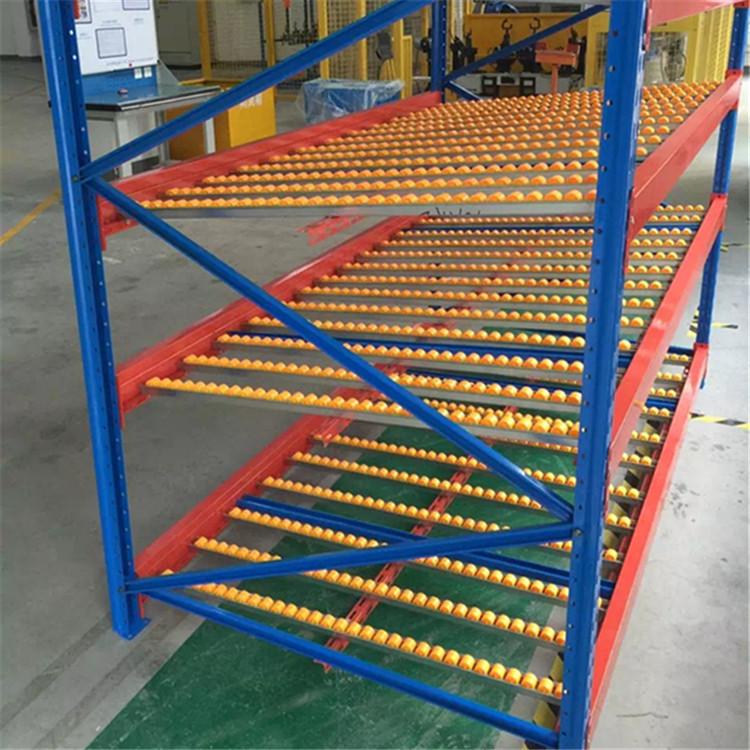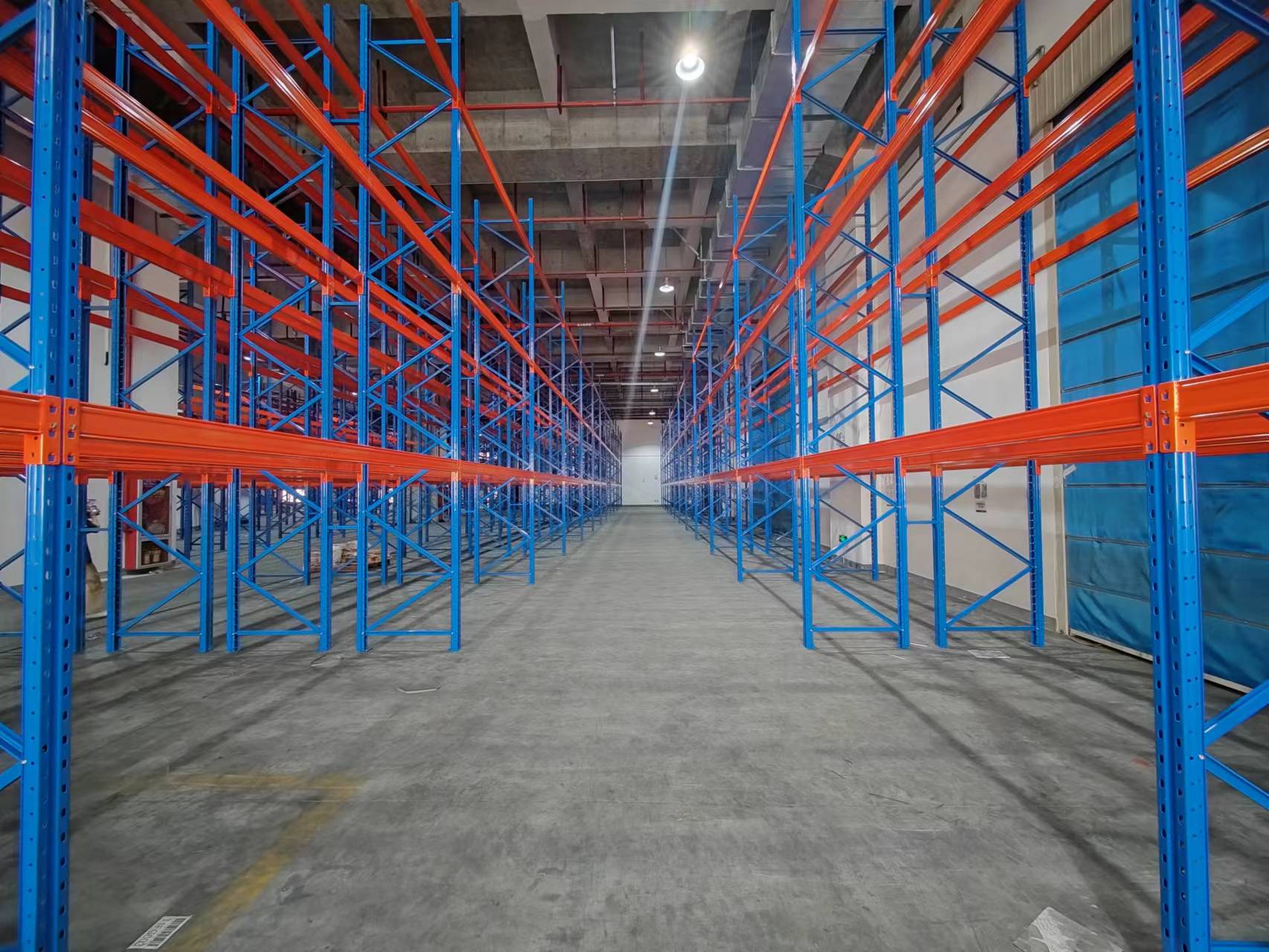If you're managing a warehouse, distribution center, or any facility with significant storage needs, you've undoubtedly searched for "industrial racking manufacturers." This search is often the first step in a critical process—finding a storage solution that is not only robust and reliable but also cost-effective. The market is flooded with options, and navigating the landscape of industrial racking manufacturers can be daunting. The price tags vary wildly, and the terminology can be confusing.
This article cuts through the noise. We're not just listing manufacturers; we're providing a comprehensive framework for understanding what you're paying for and how to select the right partner for your business's specific needs. The goal is to equip you with the knowledge to make an informed decision that balances upfront cost with long-term value, safety, and operational efficiency.

When you receive a quote from industrial racking manufacturers, the final number is a sum of several variables. Understanding these will help you decipher why one system costs $10,000 and another, for a similar footprint, might cost $50,000.
Material and Steel Gauge: This is the most significant factor. The quality, grade, and thickness of the steel used directly impact the racking's load capacity and longevity. Heavier-gauge steel can support more weight and withstand more impact, but it also costs more. Some racking suppliers might offer lower prices by using lighter materials, which could compromise safety and durability.
System Design and Complexity: Are you looking for simple, standalone selective pallet racking? Or a complex, multi-level cantilever system for long goods? Perhaps a high-density solution like push-back or drive-in racking? The engineering complexity, the number of components (beams, frames, connectors), and the customizations required all influence the price. A sophisticated design from experienced industrial racking manufacturers will cost more but can dramatically improve your storage density and workflow.
Load Capacity and Upright Height: It seems obvious, but it's worth stating: racks designed to hold heavier loads and reach greater heights require more material and more rigorous engineering. A 20-foot tall rack holding 5,000 lbs per beam level is a different beast than an 8-foot tall rack holding 1,000 lbs. The price will reflect this difference substantially.
Finish and Coating: The storage environment dictates the necessary finish. A standard powder-coated finish is sufficient for most dry, indoor warehouses. However, for cold storage, food processing, or chemical environments, you may need specialized epoxy coatings or hot-dip galvanizing to prevent corrosion. These specialized finishes add to the cost but are non-negotiable for certain applications.
Volume and Project Scale: Like most things, economies of scale apply. A large project filling a new 100,000-square-foot warehouse will typically get a lower price per bay than a small business looking to equip a 5,000-square-foot area.
Not all storage problems are the same. Leading industrial racking manufacturers offer a portfolio of systems, each with its own cost and application profile.
Selective Pallet Racking: This is the most common system you'll find. It offers direct access to every pallet, making it ideal for warehouses with a high SKU count. The cost is relatively low per position, but it offers less density than other systems. When discussing this with industrial racking manufacturers, pay close attention to beam capacity and the connection type.
Drive-In and Drive-Through Racking: These are high-density systems where forklifts drive directly into the rack structure. They are perfect for storing large quantities of similar products with low SKU counts (e.g., beverages, canned goods). The cost is higher due to the robust construction needed to withstand vehicle impact and the complexity of the guiding rails and structure.
Push Back Racking: A popular high-density choice that operates on a Last-In, First-Out (LIFO) basis. Pallets are stored on wheeled carts on a slight incline. When a new pallet is loaded, it pushes the previous pallets back. This system requires more specialized components than selective racking, placing it in a higher price bracket, but it offers excellent density with good selectivity.
Cantilever Racking: Designed for long, bulky items like timber, piping, or furniture, cantilever racks have arms that extend from a central column. The cost is driven by the column's strength, the arm capacity, and the required clear span between columns. It's a specialized solution with a corresponding price point.
Mezzanine Systems: While not racking per se, many industrial racking manufacturers also supply mezzanines. These create a second or third level within your facility, effectively multiplying your floor space. Costs are highly variable, depending on size, load capacity, and integration with other storage systems.
Choosing among industrial racking manufacturers is not just about the lowest bid. It's about partnership, safety, and service.
Engineering and Design Capabilities: Do they offer in-house engineering services? A proper manufacturer will provide certified, site-specific drawings that comply with local building codes and safety standards (like RMI - Rack Manufacturers Institute). This is not an area for shortcuts.
Reputation and References: Look for established companies with a proven track record. Ask for case studies or references from clients with similar projects. How long have they been in business?
Safety First Approach: Inquire about their safety philosophy. Do they conduct post-installation inspections? Are their products designed with safety features like lockable beam clips and column protectors?
Service and Support: What does the post-sale support look like? Can they provide spare parts easily? Do they have a network of certified installers, or can they recommend reputable ones? The relationship shouldn't end once the racks are delivered.

It can be tempting to go with the lowest-cost option from an unknown industrial racking manufacturer. However, this decision carries significant hidden costs:
Safety Risks: Poorly designed or under-spec'd racking can fail, leading to product damage, injury, or even loss of life.
Downtime and Repair: Frequent repairs and replacements disrupt operations and eat into the initial savings.
Low Efficiency: A system that isn't optimally designed for your workflow will create bottlenecks and slow down your pick-and-pack processes, costing you money in labor every single day.
Limited Scalability: A cheap system may not be easily adaptable as your business grows, forcing you to reinvest sooner than anticipated.
Investing in quality from reputable industrial racking manufacturers is an investment in your operation's safety, efficiency, and future.
Your search for the right industrial racking manufacturers is a strategic business decision. By focusing on the total cost of ownership—which includes the initial price, long-term durability, operational efficiency, and, most importantly, safety—you can forge a partnership that will support your logistics success for years to come. Take your time, ask detailed questions, and prioritize quality engineering. Your warehouse, your bottom line, and your team will thank you.
Q1: What is the typical lead time for receiving racking from industrial racking manufacturers?
A1: Lead times can vary significantly based on the project's complexity and the manufacturer's current workload. For standard selective pallet racking, you might expect 4 to 8 weeks from order to delivery. For highly customized or large-volume projects, this can extend to 12 weeks or more. It's crucial to discuss timelines upfront and factor them into your project planning.
Q2: How do I know if the racking design provided by the manufacturer is safe and compliant?
A2: Reputable industrial racking manufacturers will provide engineered drawings that are sealed by a professional engineer. These drawings should specify load capacities, anchorage details, and installation instructions that comply with industry standards like those from the Rack Manufacturers Institute (RMI). Always request and retain these documents.
Q3: Can I mix and match components from different industrial racking manufacturers?
A3: It is strongly discouraged. Storage systems are engineered as complete, integrated units. Mixing components from different industrial racking manufacturers can compromise the structural integrity of the entire system, void warranties, and create serious safety hazards. Always use components designed to work together from a single manufacturer.
Q4: Do I need a professional installer, or can my own team assemble the racking?
A4: While some basic systems might seem straightforward, it is highly recommended to use trained and certified installers. Proper installation is critical for safety and performance. Professional installers understand torque specifications, alignment, and anchoring requirements, ensuring the system performs as engineered. Many reputable industrial racking manufacturers can recommend certified installation partners.
Q5: What kind of ongoing maintenance should I perform on my industrial racking system?
A5: Regular, documented inspections are essential. You should perform weekly visual checks for any visible damage, such as dents, bends, or missing components. A more formal, in-depth inspection by a qualified person should be conducted annually. Any damaged component should be immediately unloaded and reported to your racking supplier for replacement. Never attempt to repair a damaged upright or beam yourself.
Q6: Are there specific foundations required for industrial racking?
A6: Yes, the floor is the foundation of your racking system. It must be level and capable of supporting the point loads imposed by the rack uprights. Your industrial racking manufacturer's engineering drawings will specify the required floor flatness and load-bearing capacity. This is a critical consideration for new construction or retrofitting an existing space.
 Wechat
Wechat
 Whatsapp
Whatsapp